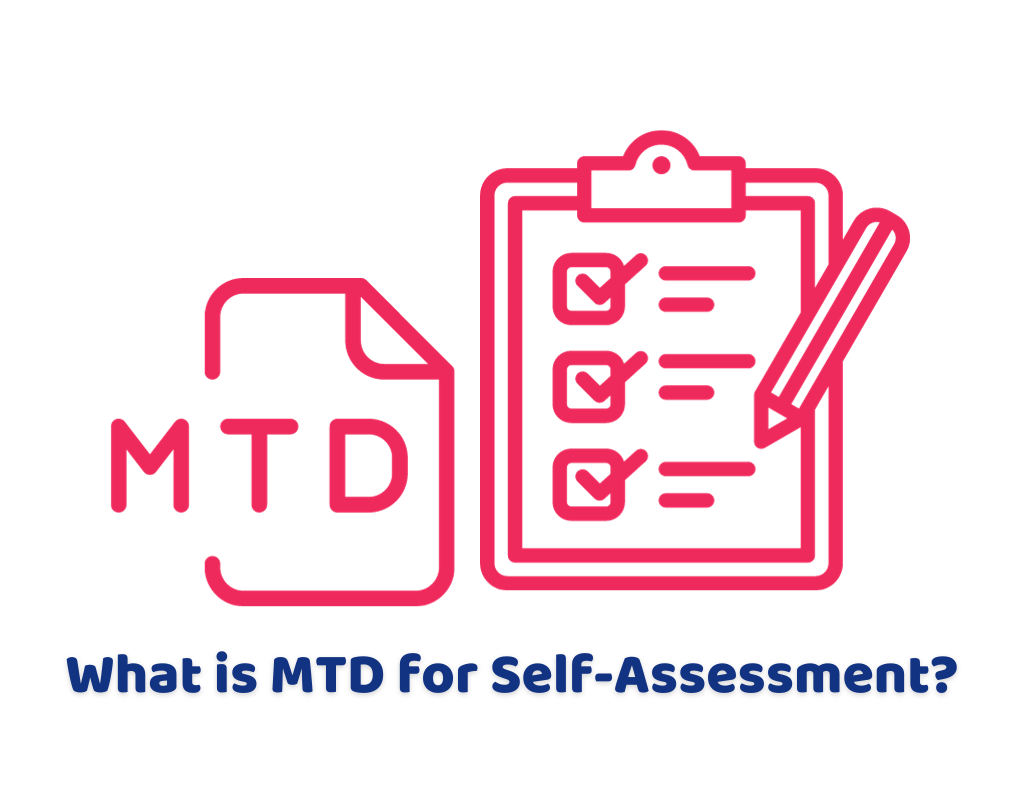Let’s dive into the world of MTD for self-assessment. MTD is a government initiative in the UK that aims to modernise the tax system by digitising the way individuals and businesses report their income and expenses to HMRC. It’s all about moving away from paper-based record-keeping and embracing digital solutions.
The introduction of MTD for ITSA means that individuals, including sole traders like yourself, must maintain digital records of their income and expenses using compatible accounting software or apps. This shift towards digital record-keeping and filing tax returns online brings several benefits, such as reducing errors, saving time, and ensuring better accuracy in reporting. So, buckle up as we explore the ins and outs of MTD for ITSA and how it can streamline your tax obligations.
Reach out to one of our professionals to get to know about MTD for self assessment in the UK. Get in touch with us and you will be provided instant professional help!
What is MTD for Self-Assessment?
It’s designed to make the process of tax reporting and record-keeping easier for self-employed individuals. Under MTD, self-employed individuals must keep digital records of their income and expenses using compatible accounting software or apps.
When does MTD for ITSA Start for the Self-Employed?
MTD for ITSA (Income Tax Self Assessment) is being rolled out in stages for self-employed individuals in the UK. The official start date for MTD for ITSA will depend on your specific circumstances. As of now, MTD for ITSA is expected to be implemented for businesses with annual turnover above £10,000 starting from April 2023. By keeping digital records and submitting tax returns digitally, it will help streamline the process and improve accuracy.
When is the Deadline for MTD for ITSA?
when it comes to the deadline for MRD (Making Tax Digital) for ITSA (Income Tax Self Assessment), the information available is a bit limited at the moment. The implementation of MTD for ITSA is being introduced gradually, and specific deadlines for MRD have not been provided yet. It’s important to note that the deadlines for submitting tax returns under MTD for ITSA are expected to align with the existing self-assessment deadlines.
Do All Self-Employed People have to Go Digital?
The requirement for self-employed individuals to go digital under Making Tax Digital (MTD) depends on their specific circumstances. As of now, the MTD for Income Tax Self Assessment (ITSA) is being rolled out in stages. Currently, businesses with an annual turnover above £10,000 are expected to start using compatible accounting software or apps to keep digital records and submit tax returns digitally.
However, it’s important to note that there are some exemptions and deferrals in place for certain groups, such as those with limited internet access or religious beliefs that prevent the use of digital tools. It’s always a good idea to check with HMRC or a professional accountant to determine if you fall under any exemptions or deferrals.
How Do I Sign up for Making Tax Digital for ITSA?
To get started, you’ll need to ensure that you have a Government Gateway account. Once you have your Government Gateway account, you’ll need to sign up for MTD for ITSA through your account. You can do this by following the steps provided on the HMRC website or by contacting HMRC directly for assistance.
It’s important to note that the sign-up process may vary depending on your specific circumstances, so it’s always a good idea to consult with HMRC or a professional accountant to ensure you’re following the correct steps.
Can an Accountant or Bookkeeper Sign a Sole Trader Up for MTD for ITSA?
Many sole traders choose to work with an accountant or bookkeeper to navigate the process and ensure compliance with MTD requirements.
How do I Calculate Income for MTD for ITSA?
To calculate your income, you’ll need to gather all the relevant financial information, such as sales receipts, invoices, and any other sources of income. Start by adding up your total sales or revenue for the accounting period. Next, deduct any allowable business expenses, such as rent, utilities, and office supplies, to arrive at your gross profit.
From there, you’ll need to account for any other income sources, such as rental income or investments. Finally, you’ll subtract any allowable deductions, such as pension contributions or charitable donations, to arrive at your taxable income.
The Bottom Line
In conclusion, we’ve covered some important aspects of MTD for self-assessment. We discussed the need to maintain digital records and use compatible accounting software or apps to keep track of your income and expenses. We also touched on the role of accountants or bookkeepers in helping with MTD compliance and the process of signing up for MTD.
MTD aims to simplify tax reporting and make it more efficient, ensuring accurate record-keeping and timely submission of tax returns. By embracing MTD, you can streamline your tax obligations and focus more on the growth and success of your business.
AccountingFirms can assist you in managing your business and accounting problems as well as avail maximum tax relief possible.
Disclaimer: All the information provided in this article on MTD for self assessment, including all the texts and graphics, in general. It does not intend to disregard any of the professional advice.

